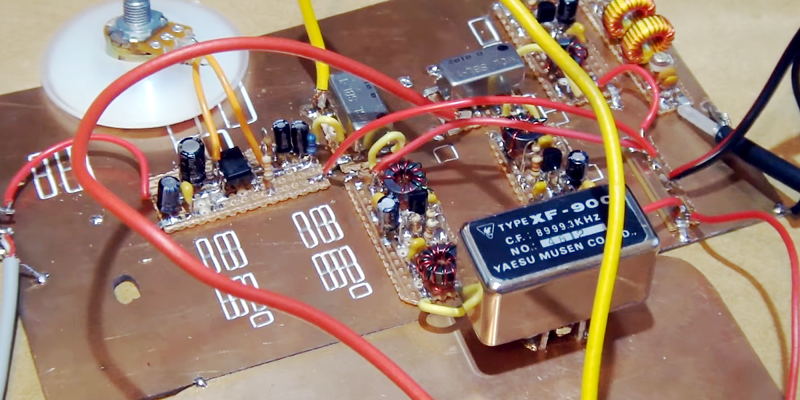[Charlie Morris] has been busy building a portable ham radio rig and documenting his progress in a series of videos. You can see the first one below. There’s four parts (more if you count things like part 4 and part 4a as two parts) so far and it is always interesting to see inside a build like this, where the choices and tradeoffs are explained.
The first part covers the Si5351 VFO and the associated display. There’s very little to the VFO other than off-the-shelf modules including an Arduino. You can also see the portable Morse code key which is actually a micro switch. The second part experiments with audio amplifiers. [Charlie] looked at the NE5534 vs discrete amplifiers. He was shooting for lowest current draw that was usable. Other parts discuss the RF amplifier and the receiver. Despite the VFO, there is quite a bit of non-module parts by the time things start shaping up.
There’s a lot of good information about why he selected particular devices and component values. There’s doubtless more videos to come, but there’s enough there now to get started. You can not only pick up some design ideas, but looking at the neat prototype construction can give you some thoughts too.
We aren’t sure what the final project will look like, but we are sure it will be interesting to follow along. [Charlie] has done other homebrew radio design videos and they are always educational.
If you want to look more into the audio amplifier part, you might enjoy our take on the common emitter amplifier. If you want some more to watch about RF design, we like [Michael Ossmann’s] workshop.
















He also has a great series of videos on designing and building a stand alone SDR SSB transceiver.
I would be interested in building this project. Please post more information
Looks like the first part of that one is here: https://www.youtube.com/watch?v=J7FEJeCYBpY
He has multiple good series that are quite informative.